Proper pruning is essential for keeping your blackberry bushes healthy, productive, and easy to manage. By trimming at the right time and using the correct techniques, you can encourage strong growth, bigger harvests, and fewer diseases. Whether you’re growing trailing, erect, or thornless varieties, knowing when and how to prune is key to a thriving berry patch.
In this article, we outline 15 simple steps to prune your blackberry bushes at the perfect time. From removing dead canes to shaping for better airflow, these easy-to-follow tips will help you maximize your berry yield and keep your plants in top condition year after year.
Understand the Right Timing
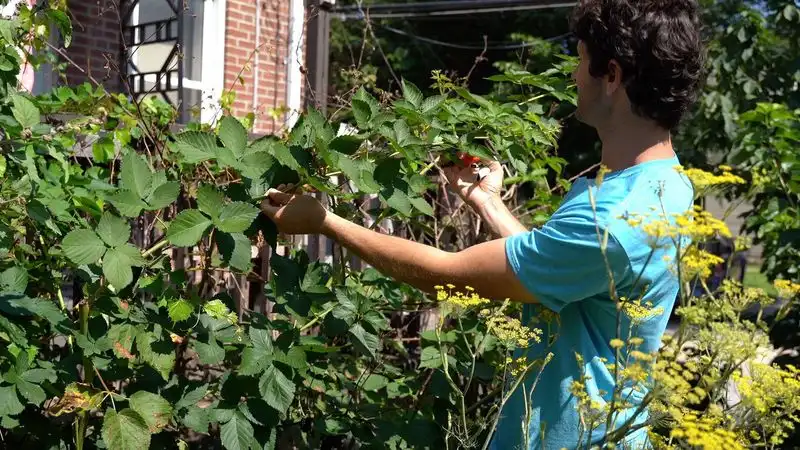
Timing is crucial when it comes to pruning blackberry bushes. The best period is typically late winter or early spring. This is when plants are dormant, reducing stress. Observing the climate of your region can help in deciding the exact timing. For instance, in milder climates, pruning might occur sooner compared to colder areas. Keep an eye on the weather forecasts, as unexpected frost can damage freshly cut canes. Adjust accordingly to protect your plants. By planning your pruning schedule, you can ensure your blackberry bushes receive the care they need to thrive.
Gather the Necessary Tools
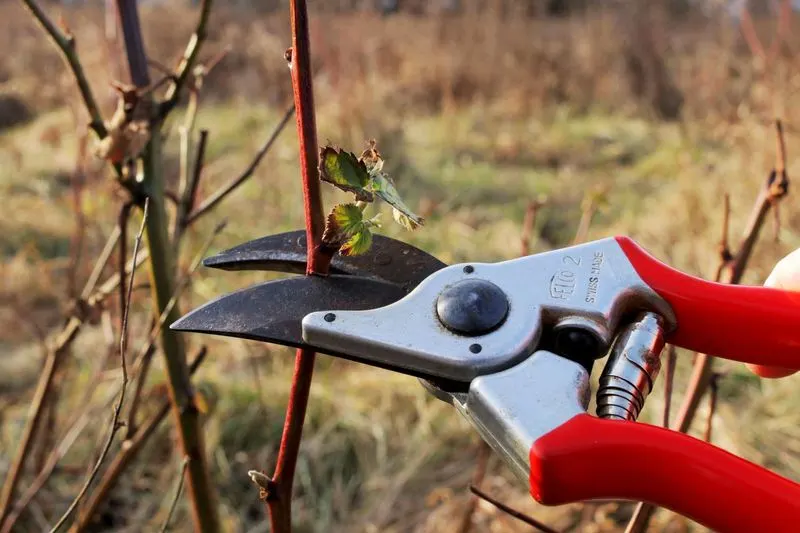
Equipping yourself with the right tools is essential for efficient pruning. Sharp pruning shears, gloves, and a garden apron should be on your checklist. Sharp tools make clean cuts, preventing plant damage and reducing the risk of disease. Gloves will protect your hands from the thorny canes, ensuring comfortable handling. A garden apron helps keep your tools handy, making the process smoother. Investing in quality tools not only simplifies the task but also contributes to the health of your blackberry bushes. Always clean and sharpen your tools before use for the best results.
Identify Dead Canes
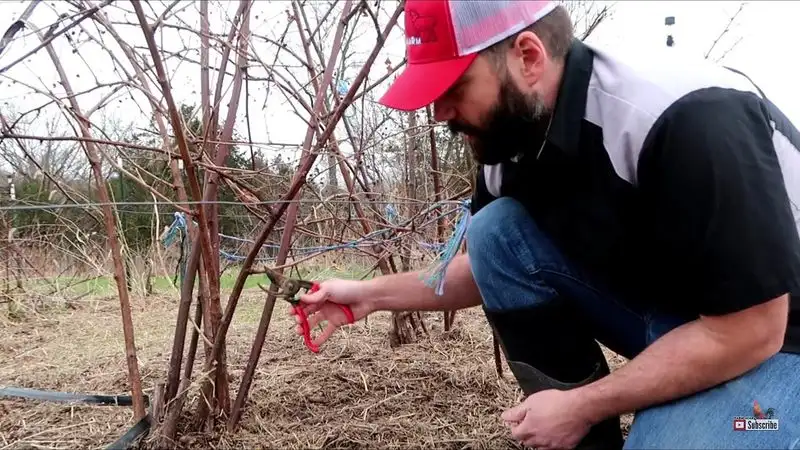
Dead canes are unproductive and should be removed first. These canes appear dry, brittle, and may have peeling bark. They lack the vibrant green of healthy stems. Gently bend the cane; if it snaps easily, it’s likely dead. Removing these canes opens up space for new growth and increases air circulation, which is vital for plant health. Regularly inspecting for dead canes ensures your bushes are only using energy to support viable growth. By identifying and removing dead canes, you contribute to the overall vigor and yield of your blackberry plants.
Cut Back Floricanes
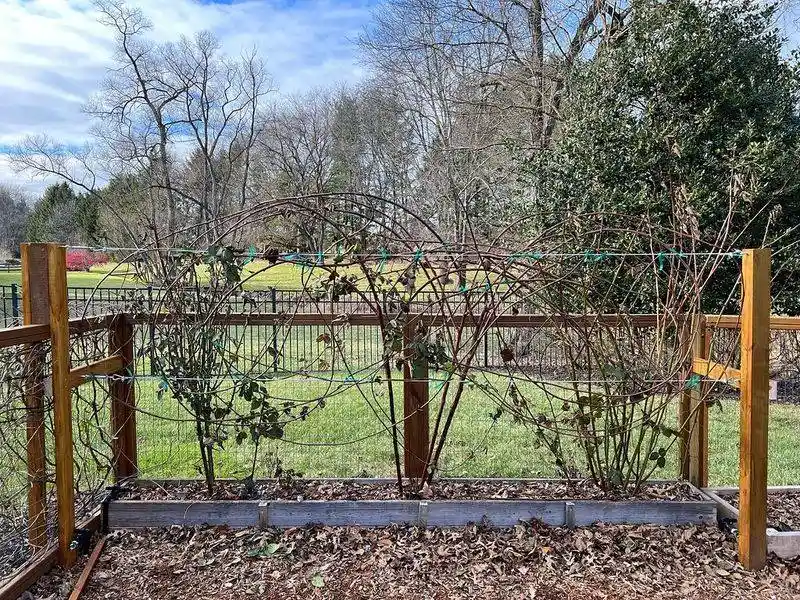
Floricanes are the canes that have borne fruit in the previous year. These need to be cut back to the ground as they will not produce again. Removing floricanes prevents disease and pest infestations, which can thrive on old, decaying wood. It also encourages new primocane growth, vital for next season’s harvest. Pay attention to the cane’s base; cutting too high can leave stubs that may become disease entry points. Properly managing floricanes ensures your plant’s energy is directed towards productive growth, fostering a healthy cycle of fruit production.
Thin Out Primocanes
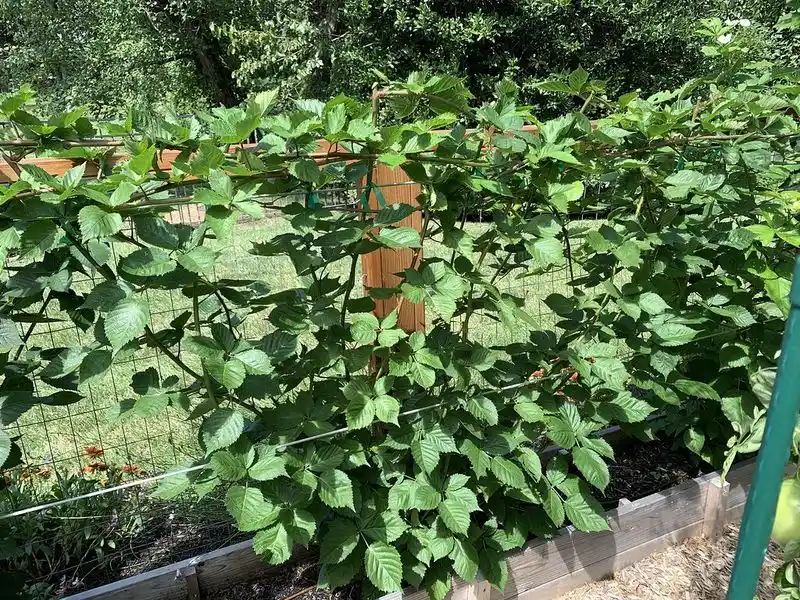
Primocanes are the new growths that will produce fruit next year. Thinning these ensures that each cane has enough space and resources to thrive. Overcrowding leads to decreased air circulation and increased competition for nutrients, which can impede growth. Aim to maintain a reasonable distance between canes, roughly 6 inches apart. This spacing allows sunlight to penetrate and air to circulate, reducing the risk of fungal diseases. By thinning primocanes, you’re setting the stage for robust plants and a fruitful harvest in the upcoming season.
Maintain Proper Height

Keeping your blackberry canes at an ideal height promotes better air circulation and makes harvesting easier. Generally, pruning canes to about four to six feet tall is recommended. This height is manageable and prevents the plant from becoming too dense. Taller canes can overshadow shorter ones, limiting sunlight exposure. Regular cutting back to this height helps maintain an open, bushy shape. This practice ensures that all parts of the plant receive adequate light, promoting healthier, more productive growth. Managing height effectively supports sustained berry production and plant health.
Remove Weak or Spindly Canes
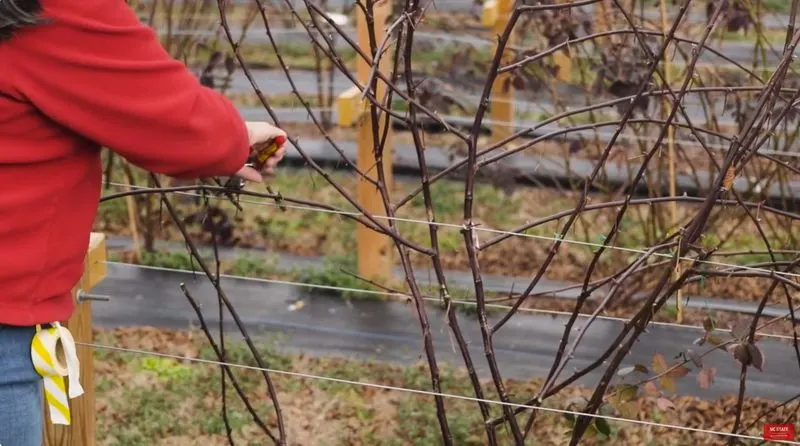
Weak or spindly canes often struggle to support healthy fruit production. These canes are typically thinner and less vigorous compared to others. Removing them allows stronger canes to flourish, as they won’t have to compete for resources. This step is particularly important in promoting a robust plant structure. By focusing on more vigorous canes, you ensure that the plant’s energy is not wasted on less productive parts. This not only enhances yield but also improves the plant’s overall resilience and health, setting it up for future success.
Train Canes on a Trellis
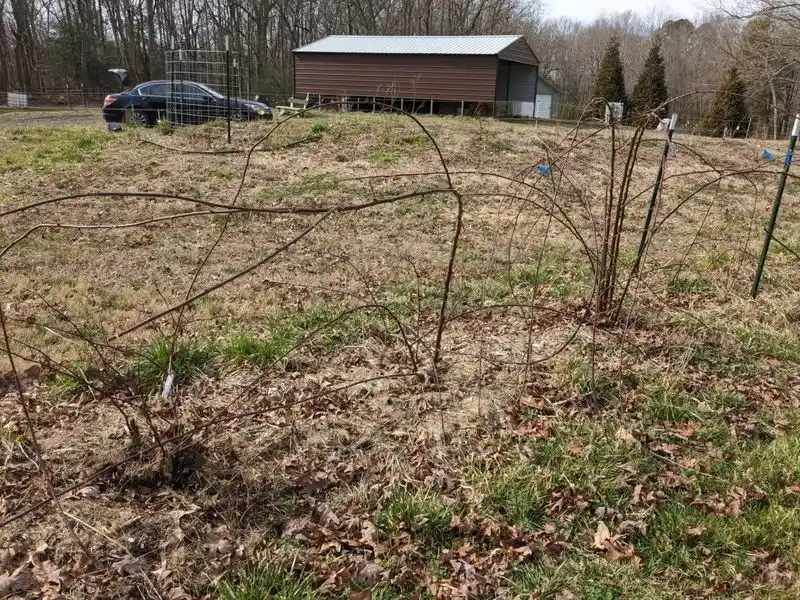
Using a trellis to train your blackberry canes enhances growth and fruit production. This method organizes canes, keeping them upright and spaced, which improves sunlight exposure and air circulation. Training canes on a trellis also makes maintenance and harvesting more manageable. Begin by gently tying canes to the trellis, ensuring they’re spaced evenly. This setup prevents canes from trailing on the ground, reducing disease risk. As canes grow, adjust ties to accommodate their growth. A well-maintained trellis system supports healthy, accessible plants that are easy to care for and harvest.
Disinfect Tools Regularly
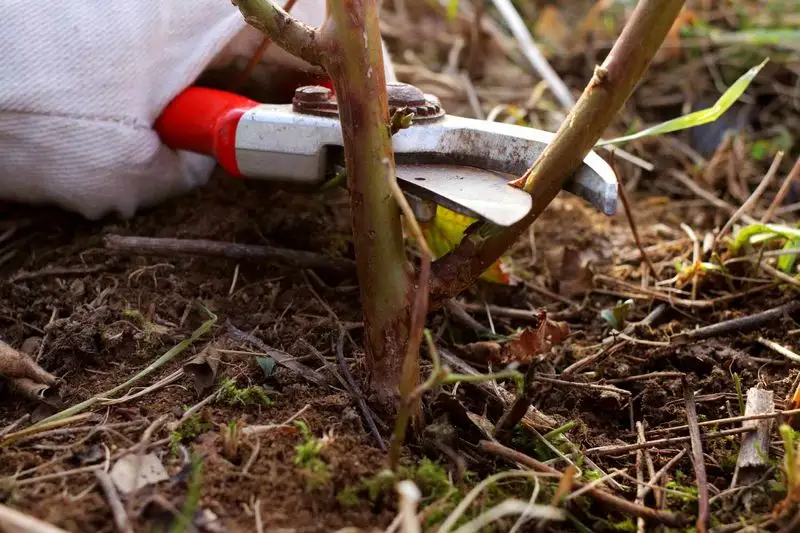
Regular disinfection of your pruning tools is vital in preventing the spread of diseases among plants. After each use, tools should be cleaned with a solution such as alcohol or bleach. This practice removes plant sap and bacteria that can transfer infections from one cane to another. Especially after cutting diseased or dead canes, cleaning tools becomes crucial. It’s a simple step but one that can significantly impact the health of your blackberry bushes. By maintaining clean tools, you reduce the risk of disease transmission, ensuring healthier plant growth and fruit production.
Mulch Around the Base
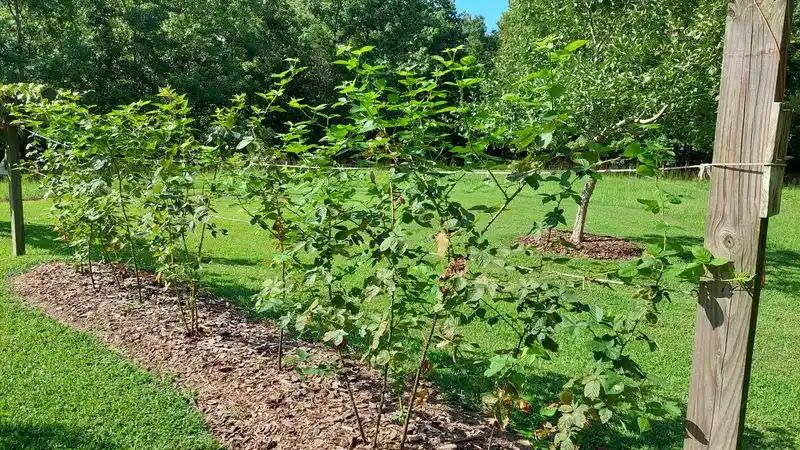
Applying mulch around the base of your blackberry bushes offers multiple benefits. It conserves moisture, suppresses weeds, and regulates soil temperature. A thick layer of organic mulch such as straw or bark chips is ideal. Mulch helps maintain a consistent environment for roots, crucial for plant health. It also decomposes over time, enriching the soil with nutrients. Regularly replenishing mulch ensures these benefits continue, supporting vigorous plant growth. By investing a little time in mulching, you enhance your plants’ resilience against environmental stresses, contributing to a more abundant harvest.
Monitor for Pests and Diseases

Regular monitoring of your blackberry bushes for pests and diseases is essential in maintaining plant health. Look for signs such as discolored leaves, wilting, or unusual spots. Early detection allows for timely intervention, reducing potential damage. Implementing natural pest control methods, like introducing beneficial insects, can help manage issues without harming the plants. Maintaining a clean garden environment also discourages pest infestations. Consistent monitoring ensures that you can address problems before they escalate, safeguarding your blackberry bushes and ensuring a healthy, productive garden.
Prune to Improve Airflow
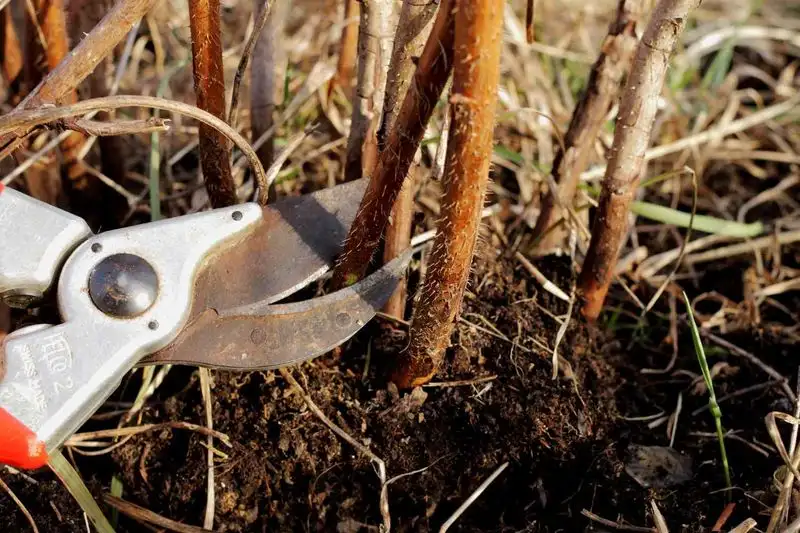
Enhancing airflow within your blackberry bushes is crucial in preventing fungal diseases. This involves selectively pruning canes to create an open structure that allows air to circulate easily through the plant. Improved airflow helps keep foliage dry and reduces the incidence of issues like powdery mildew. Open bushes also ensure that sunlight reaches most parts, enhancing photosynthesis and plant vitality. Regularly assessing and pruning to maintain this structure supports overall plant health, making your garden more productive and resilient against disease pressures.
Fertilize Appropriately
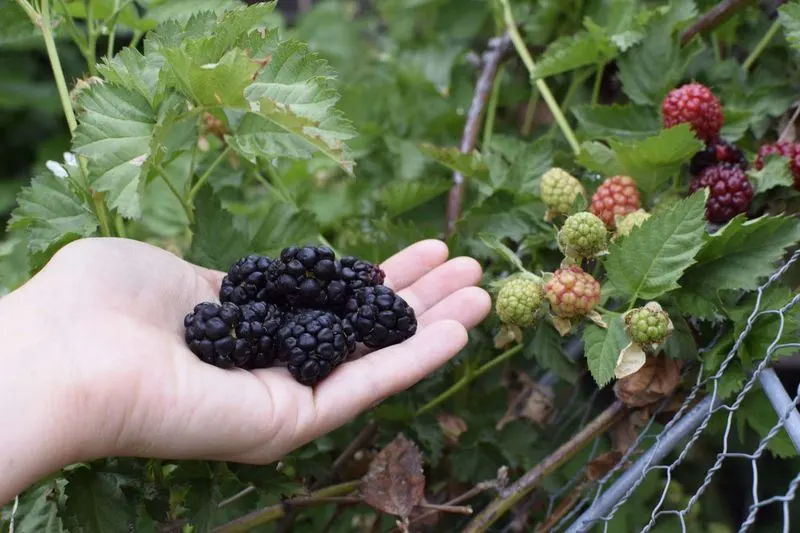
Appropriate fertilization is key to supporting the growth and fruiting of blackberry bushes. Choose a balanced fertilizer, applying it in early spring as growth begins. This timing ensures nutrients are available when plants need them most. Avoid over-fertilizing, as this can lead to lush foliage at the expense of fruit production. Consistent, moderate feeding supports healthy cane and root development, laying the foundation for a generous harvest. Monitoring plant response to fertilization helps adjust applications for optimal growth, ensuring that your blackberry bushes remain healthy and productive throughout the growing season.
Plan Regular Inspections

Regular inspections are vital to the ongoing care of your blackberry bushes. These check-ups help you catch problems early, whether they’re related to pests, diseases, or growth issues. Set a schedule for inspections, perhaps weekly during peak growing seasons. Document observations and actions taken, as this helps track the plant’s health over time. Prompt attention to any irregularities ensures your plants remain in peak condition. By staying vigilant, you can maintain a thriving garden that not only produces abundant fruit but also remains a source of pride and joy.
Protect During Dormancy
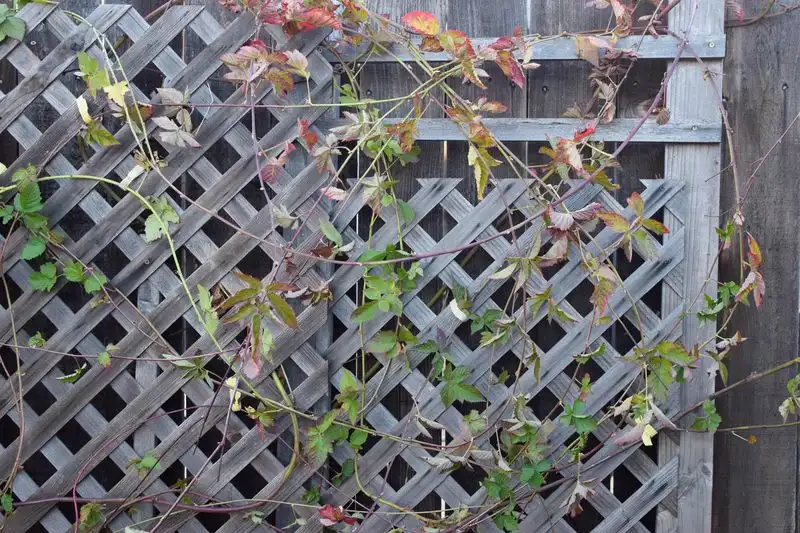
During dormant periods, protecting blackberry bushes from harsh winter conditions is crucial. Use materials like burlap to shield them from extreme cold and wind. Proper protection helps prevent damage to buds and canes, setting the stage for robust growth in spring. Pay attention to securing coverings properly to withstand winter storms. This step ensures that your plants emerge from dormancy healthy and ready to produce. Investing the time to protect during dormancy pays off with vigorous growth and a prosperous harvest once the growing season resumes.

